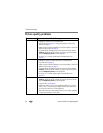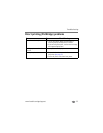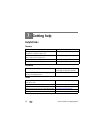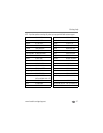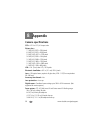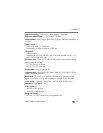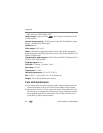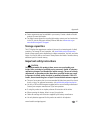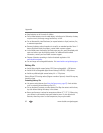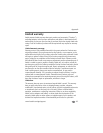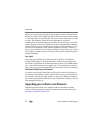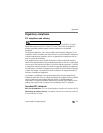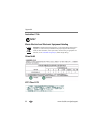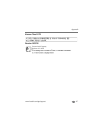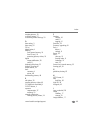
62 www.kodak.com/go/support
Appendix
■ Keep batteries out of the reach of children.
■ Do not allow batteries to touch metal objects, including coins. Otherwise, a battery
may short circuit, discharge energy, become hot, or leak.
■ Do not disassemble, install backward, or expose batteries to liquid, moisture, fire,
or extreme temperature.
■ Remove the battery when the product is stored for an extended period of time. If
battery fluid leaks inside the product, contact Kodak customer support.
■ In the unlikely event that battery fluid leaks onto your skin, wash immediately with
water and contact your local health provider. For additional health-related
information, contact your local Kodak customer support.
■ Dispose of batteries according to local and national regulations. Visit
www.kodak.com/go/kes.
■ Do not charge non-rechargeable batteries. Visit www.kodak.com/go/batterytypes.
Battery life
■ Kodak lithium digital camera battery CRV3 (non-rechargeable): > 500 pictures
■ Kodak Ni-MH rechargeable digital camera battery (KAA2HR): > 300 pictures
■ Kodak oxy-alkaline digital camera battery AA: > 120 pictures
Battery life per CIPA testing method (Approx. number of pictures). Actual life may vary
based on usage.
Extending battery life
■ Use power-saving features (see Using the Setup menu, page 33). Limit activities
such as reviewing pictures/videos on the LCD.
■ Dirt on the battery contacts can affect battery life. Wipe the contacts with a clean,
dry cloth before loading the battery in the camera.
■ Battery performance is reduced at temperatures below 41° F (5° C). When using
your camera in cold weather, keep spare batteries warm. Do not discard cold
batteries; when they return to room temperature, they may be usable.



